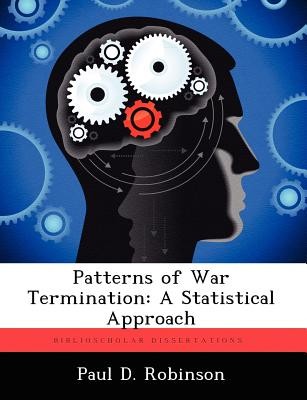
- We will send in 10–14 business days.
- Author: Paul D Robinson
- Publisher: BiblioScholar
- ISBN-10: 1249584604
- ISBN-13: 9781249584605
- Format: 18.9 x 24.6 x 0.8 cm, softcover
- Language: English
- SAVE -10% with code: EXTRA
Reviews
Description
This research uses an advanced statistical technique to expand upon the current understanding of war termination. Specifically, this thesis addressed questions concerning the most relevant factors toward predicting both the outcomes of interstate wars and the winners of intrastate and extra-systemic wars, within the limitations of the available data. Open-source war data from the Correlates of War Project was analyzed using both binary and multinomial logistic regression techniques. While the Correlates of War Project did not necessarily focus its data collection efforts on those variables historically associated with war termination, it did provide a sufficient number of variables with which to demonstrate the applicability of logistic regression techniques to war termination analyses. As a consequence, every significant logistic regression model contains a single relevant variable. For both intrastate and extra-systemic wars, the duration of the conflict was found to be most relevant to predicting the winner. In contrast, the proportion of total casualties borne by a nation in an interstate war was most relevant to predicting the manner in which an interstate war ends. Conclusions drawn from this research and suggestions for future statistical applications to war termination studies were also discussed.
EXTRA 10 % discount with code: EXTRA
The promotion ends in 18d.17:54:51
The discount code is valid when purchasing from 10 €. Discounts do not stack.
- Author: Paul D Robinson
- Publisher: BiblioScholar
- ISBN-10: 1249584604
- ISBN-13: 9781249584605
- Format: 18.9 x 24.6 x 0.8 cm, softcover
- Language: English English
This research uses an advanced statistical technique to expand upon the current understanding of war termination. Specifically, this thesis addressed questions concerning the most relevant factors toward predicting both the outcomes of interstate wars and the winners of intrastate and extra-systemic wars, within the limitations of the available data. Open-source war data from the Correlates of War Project was analyzed using both binary and multinomial logistic regression techniques. While the Correlates of War Project did not necessarily focus its data collection efforts on those variables historically associated with war termination, it did provide a sufficient number of variables with which to demonstrate the applicability of logistic regression techniques to war termination analyses. As a consequence, every significant logistic regression model contains a single relevant variable. For both intrastate and extra-systemic wars, the duration of the conflict was found to be most relevant to predicting the winner. In contrast, the proportion of total casualties borne by a nation in an interstate war was most relevant to predicting the manner in which an interstate war ends. Conclusions drawn from this research and suggestions for future statistical applications to war termination studies were also discussed.


Reviews